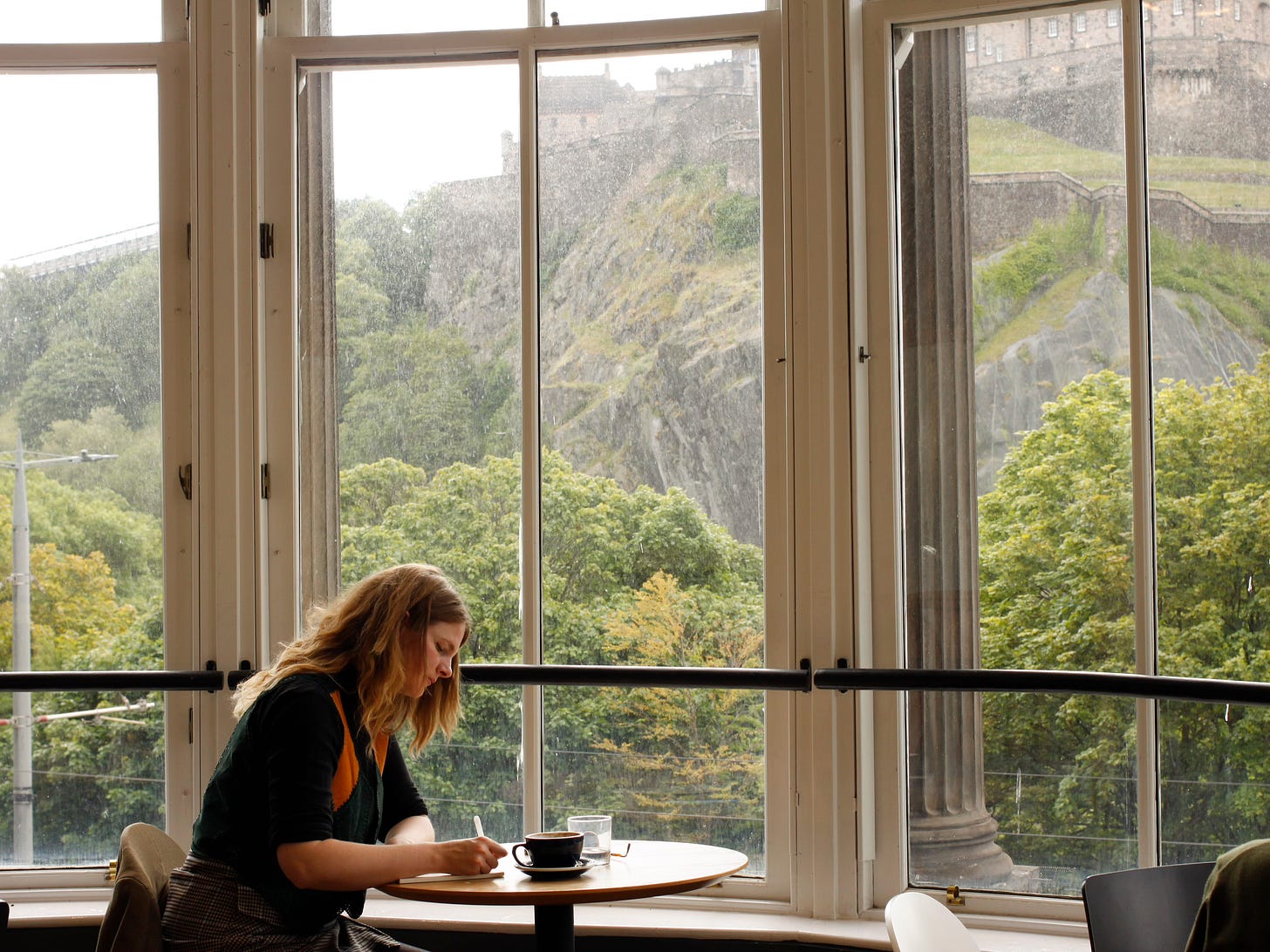The Architecture of An Artistic Life
"Life is always offering" | On writing routines, inspiration and the purpose of art | The Muse Letter No. 190
I’m standing in Topping’s, one of Edinburgh’s many bookshops, the first page of Evenings and Weekends1 open where it quotes a line from Eileen Myles poem ‘peanut butter’:
“summer as a
time to do
nothing and make
no money.”2
A week ago I quit Instagram in order to do exactly that: to free myself of the constraints of constant production, to learn how to do nothing again. Recognising that “what gives one’s life meaning stems from accidents, interruptions, and serendipitous encounters.”3
I want to move through the day again as if pulled by an invisible thread, unraveling slowly. To create without immediacy. To error, to learn, to try again without worrying about someone else’s perception of me.
A month ago, while on book tour in London, I was asked what an artistic life looks like for me, whether I keep a writing routine or how I managed to produce such a large body of work over the last five years: where did my inspiration come from?
I paused to feel into the question, to find an angle, remembering Annie Dillard’s sentiment of “How we spend our days is, of course, how we spend our lives.”, and what is often not mentioned, which is what Dillard writes about later as the actual conclusion of her book The Writing Life: “There is no shortage of good days. It is good lives that are hard to come by.”
I started to ponder what that means to me, what beliefs my life is based on, the questions I ask myself and what the little shifts are that have gotten me here.




